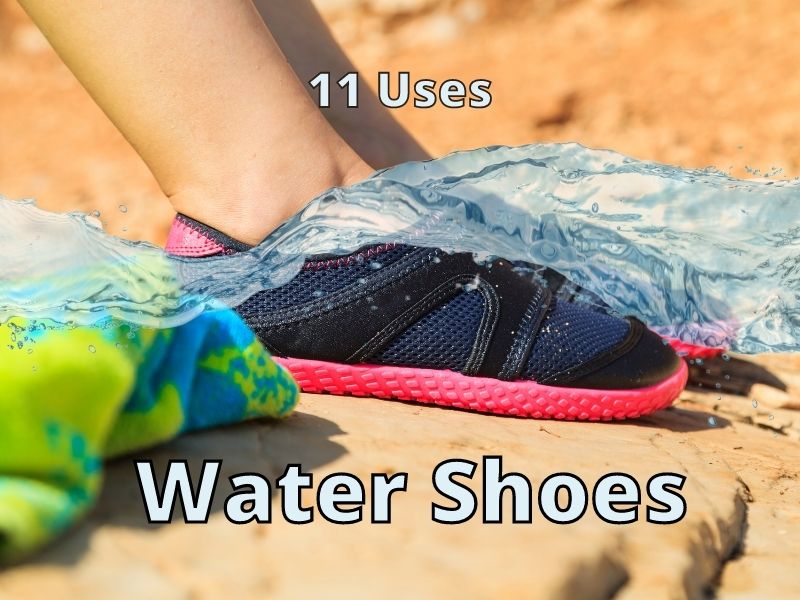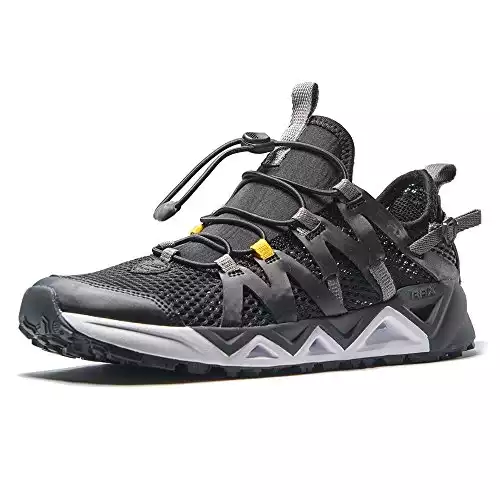I have a pair of water shoes that I bring to the beach at times. They’ve been helpful when I’m crossing hot sand, going into rocky areas, and protecting my feet from unseen obstacles in the ocean.
You will need water shoes if you plan to do any activity that may cause injury to your foot. Use them for walking on concrete, asphalt, rocky dirt paths, beach sports, water sports, and anywhere water and land meet.
When going to Lake Mead near Las Vegas, Nevada, I wore water shoes on the dock and while camping at a beach location. My feet stayed protected and I was able to get on and off the boat without problems.
Get A Shoe That Meets Your Needs
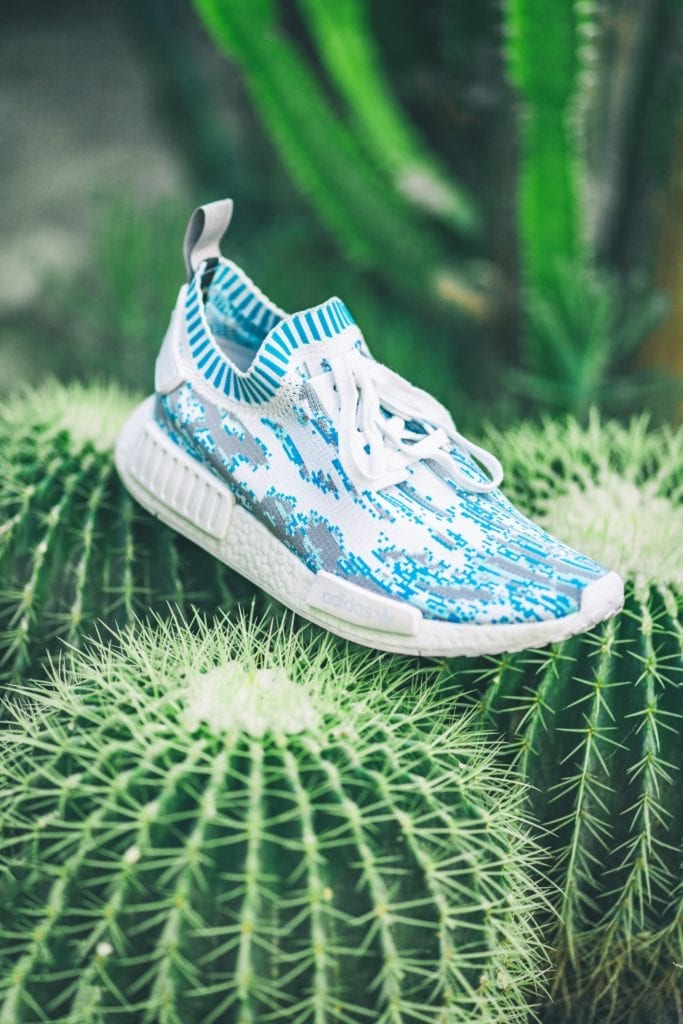
A water shoe can save your foot a lot of suffering due to scratches, heat, and irritation from the sand.
When I go to the beach, I’ll wear my water shoes in the car and then walk to the beach and set up my beach umbrella and towel. At that point, I take off my shoes and go into the water.
I’ll usually keep my water shoes off while in the water unless I find the bottom of the ocean is rocky. Then I put on my water shoes to prevent scrapes and scratches from rocks.
Later, while at the beach, I’ll usually put on my shoes and take a walk to rocky areas and look for shells and wildlife, or just have a good time exploring.
Using my water shoes enables me to climb through rocky areas and have longer endurance through softer sand.
Although I love to walk in the sand without shoes as well, having water shoes can be very helpful in some situations.
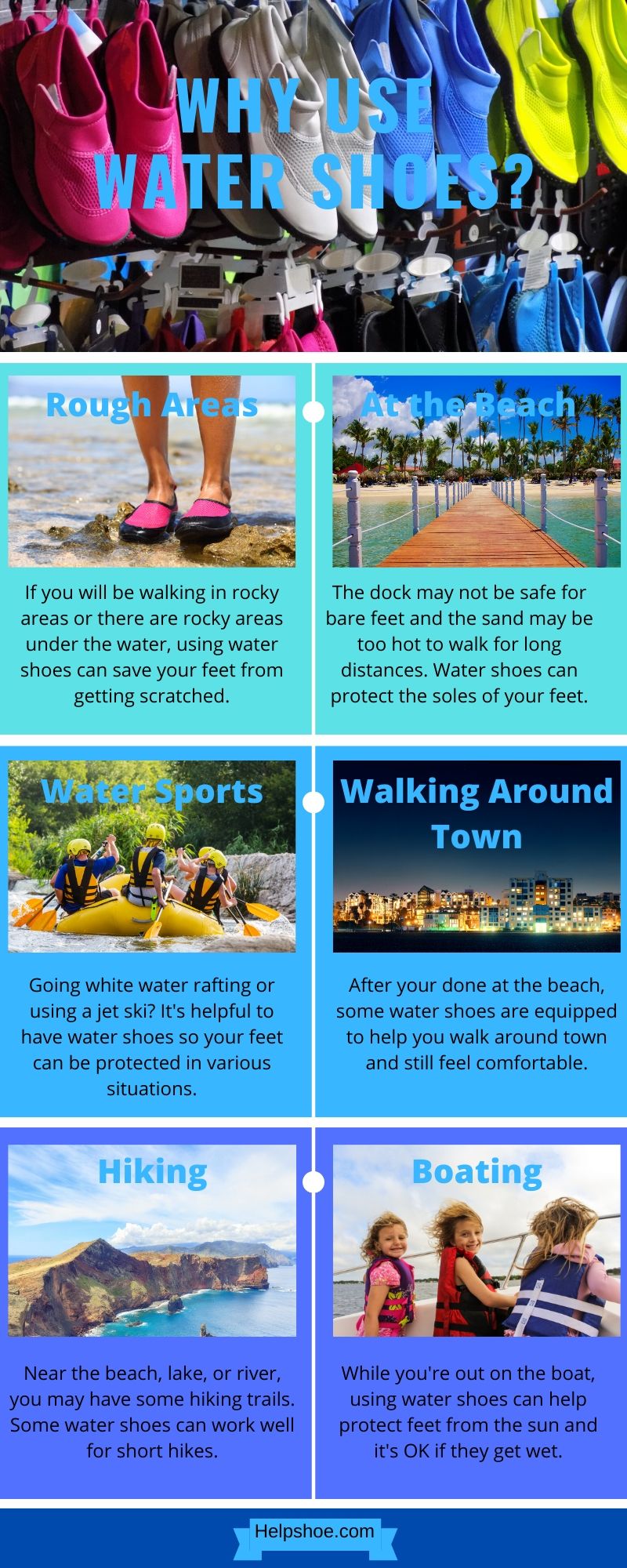
Ways To Use Your Water Shoes
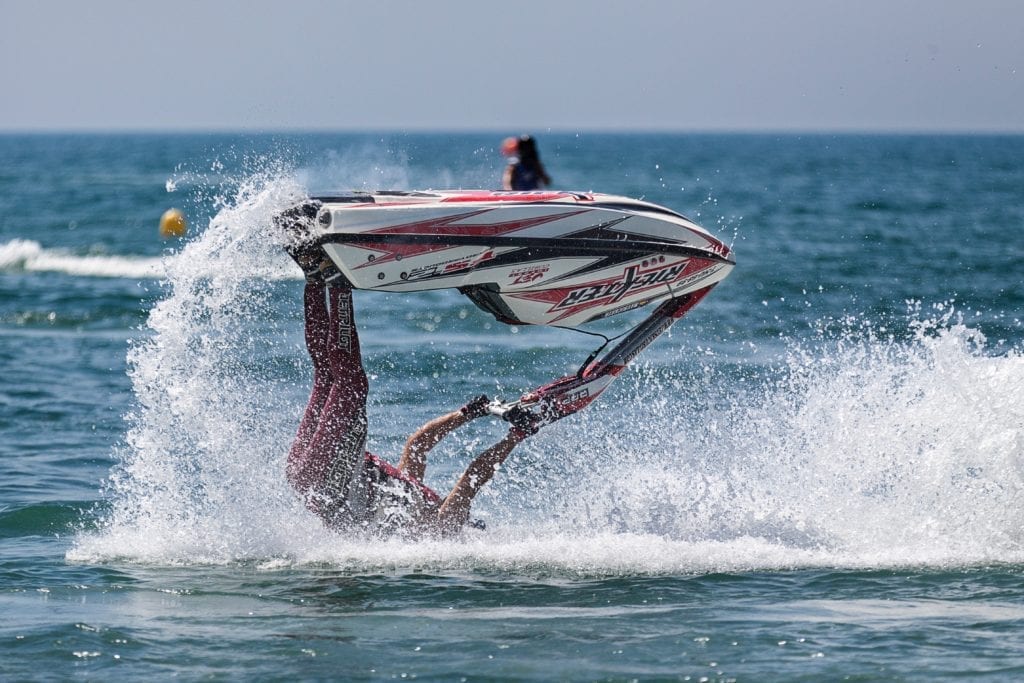
There are lots of ways to take advantage of your water shoes. If you get a shoe with a thicker sole and laces to ensure your shoe stays tight, then you’ll be able to take advantage of many of the activities that regular shoes can do in addition to those of water shoes. (Amazon Link)
Decide if you’ll be using your shoes for lots of activities besides water-related ones. If so, get shoes that will ensure your comfort while doing these activities.
You can always change shoes for different activities, but many people like to have an all-in-one shoe that can work for them during all the activities during the course of their outing.
Make sure to read reviews and check that the shoe can meet the requirements you’re looking for.
Be aware that water shoes are usually not meant to be used in extremely tough situations, but can usually handle a good amount of use for shorter periods.
If you want a tough shoe for rough use, expect to pay more for these types of water shoes.
Some people will use their water shoes for walking, hiking, biking, surfing, swimming, boating, kayaking, windsurfing, volleyball, and other water and beach activities.
You may also decide to use your shoes closer to home when going out in the rain for a short visit outside. May you have a muddy road to walk down to the mailbox.
If you’re gardening, your water shoes can help your feet stay protected and mud-free. Then you just have to wash off your shoes and they’re good as new.
It’s nice to have an outside shoe that can get dirty and that you don’t have to worry about when it looks messy.
A note of caution when using water shoes. Use more protective shoes if doing more aggressive activities to fully protect your feet and keep your water shoes from wearing out too quickly.
1. Walking In Town With Water Shoes
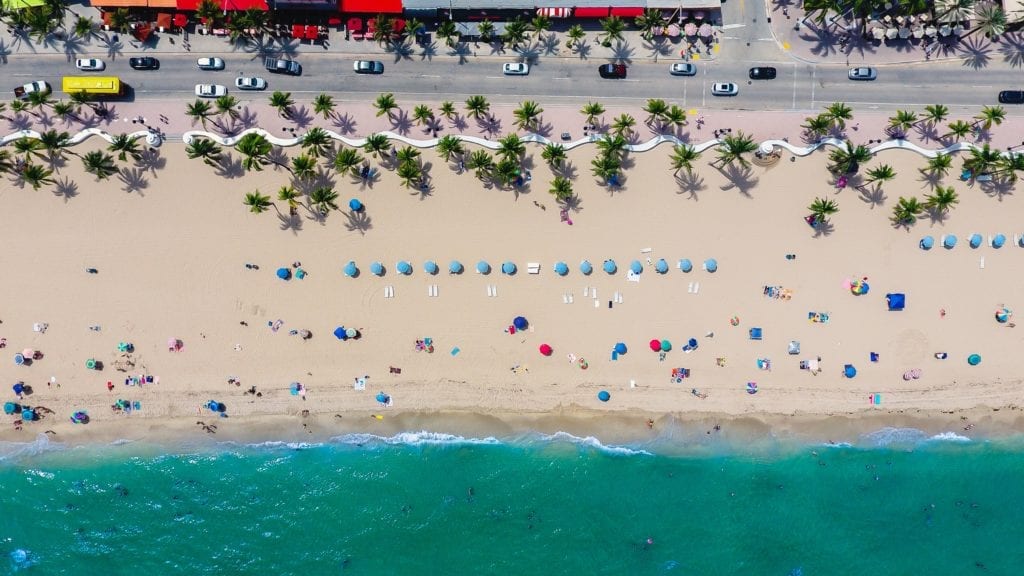
If you’d like to walk around town after going to the beach or lake, then water shoes should work well.
Don’t expect to walk (article) for long periods without some discomfort. Most likely your shoes don’t have the support for many miles of walking. Some of the thicker soled water shoes will be able to absorb more impact and give you a longer comfort period when walking.
When I walk around in my thin-soled water shoes after the beach, I feel comfortable for about an hour of light walking. I’ll visit stores and grab a bite to eat.
I find that I need to empty my shoe of excess water before I get in the car since mine does not have the holes in the soles like many of the newer water shoes do.
Your feet should feel dry if you intend to do much walking and if your water shoes are not mostly dry, consider taking it slow until they are dry.
2. Hiking With Water Shoes
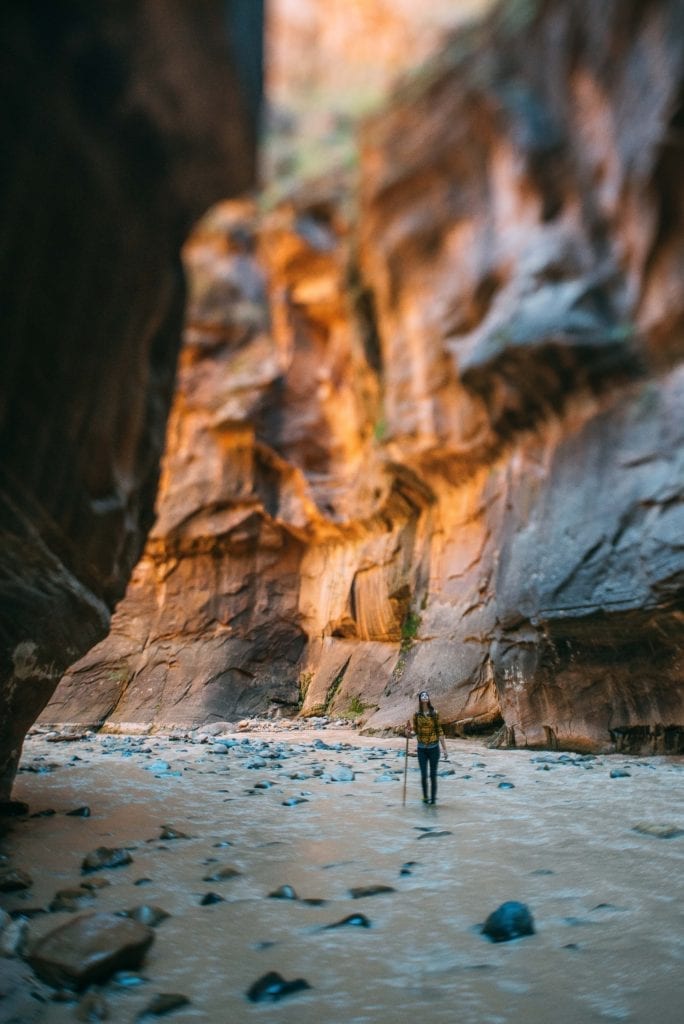
You may need to do some research to find a good water shoe for hiking. Water shoes are not intended for rough use. They’ll usually have a thin to the average-sized sole, a thin foam insole, and a fabric mesh upper.
If you plan on hiking up rocky trails you’ll need to find a different shoe that is more protective. (Amazon Link)
But, if you’re walking on a dirt trail for a couple of miles of walking through a stream for a while, you may be fine.
Things to keep in mind when using or purchasing water shoes are does it have a rubber sole. Does it give me any arch support?
The rubber sole will help with walking on slippery surfaces to some extent and the arch support will help when walking for longer distances.
Try looking at the shoes you normally wear and feel comfortable in, when you go out for the day walking around. See if they have a mostly flat insole. If so, you may also do well walking in water shoes on a dirt trail.
Normally you’ll want a shoe that has good arch support for any long period of walking or hiking (article), but for short periods a water shoe can work.
3. Biking With Water Shoes
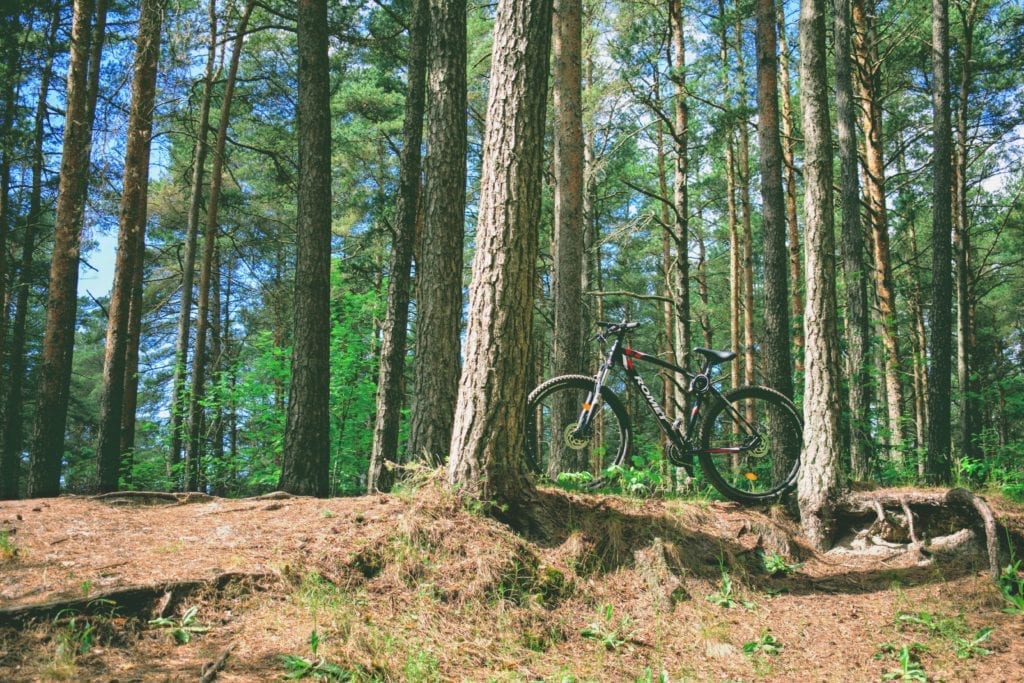
Maybe you’ve decided to cruise on your bike along the beach, river, or lake. Transitioning from water to bike can be quite helpful, especially if you may be trudging through a stream or small river with your bike.
Biking will put a little stress on your feet but may cause rubbing. Decide if your water shoes can hold your foot firmly and if you have plenty of toe wiggle room.
If you find your shoe rubbing a bit, try putting on a sock after your shoes are dry and then go riding. A sock (article) that will decrease irritation and rubbing while you ride.
If you’re crossing a small stream with your mountain bike, then it might not be a problem. But some streams require you to dismount your bike and walk the bike through it.
Riding any bike requires a shoe that has a good grip. Make sure your shoes have rubber soles and work well in water and on your bike peddles.
4. Surfing With Water Shoes
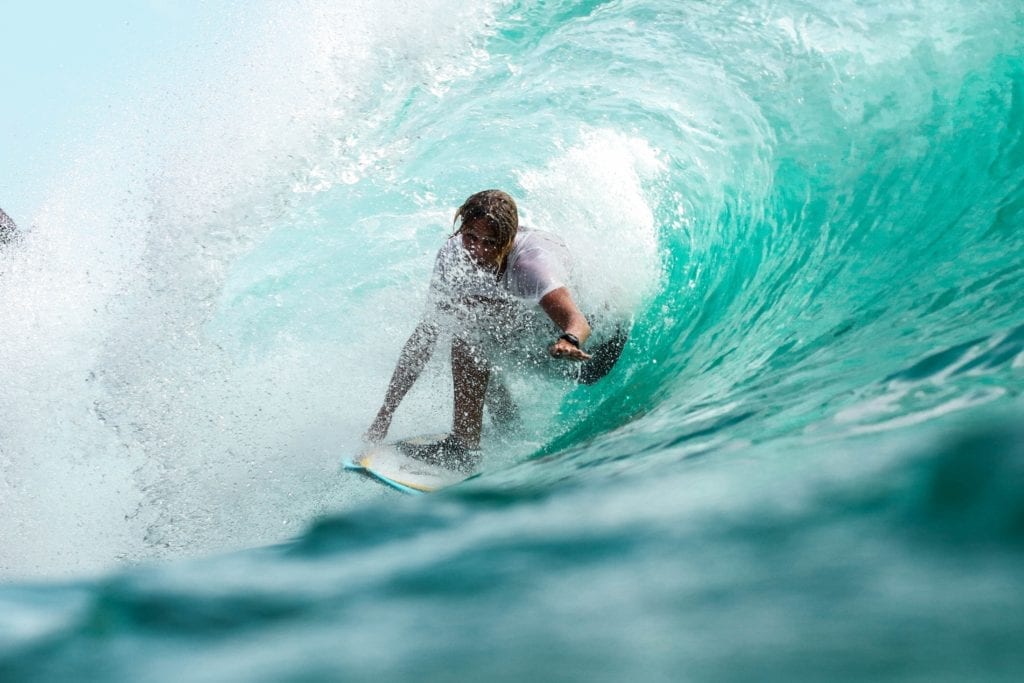
Some surfers use wetsuit socks that have a very thin rubber sole. It helps keep their feet water and aid in a bit of protection while walking in rocky areas. (Amazon Link)
If the weather is warmer, surfers usually opt for going with partial to no wetsuit and wear nothing on their feet.
But a good option is to wear a pair of rubber-thin-soled water shoes. These are good protection for rocky areas on the beach and can help protect surfers from scratches and cuts on their feet when they wipe out.
They are usually better equipped to handle rougher terrain without the risk of cutting the neoprene that wetsuit socks are made out of.
If you want to do a little walking around and protect your feet after surfing, these will work for you.
5. Swimming with Water Shoes
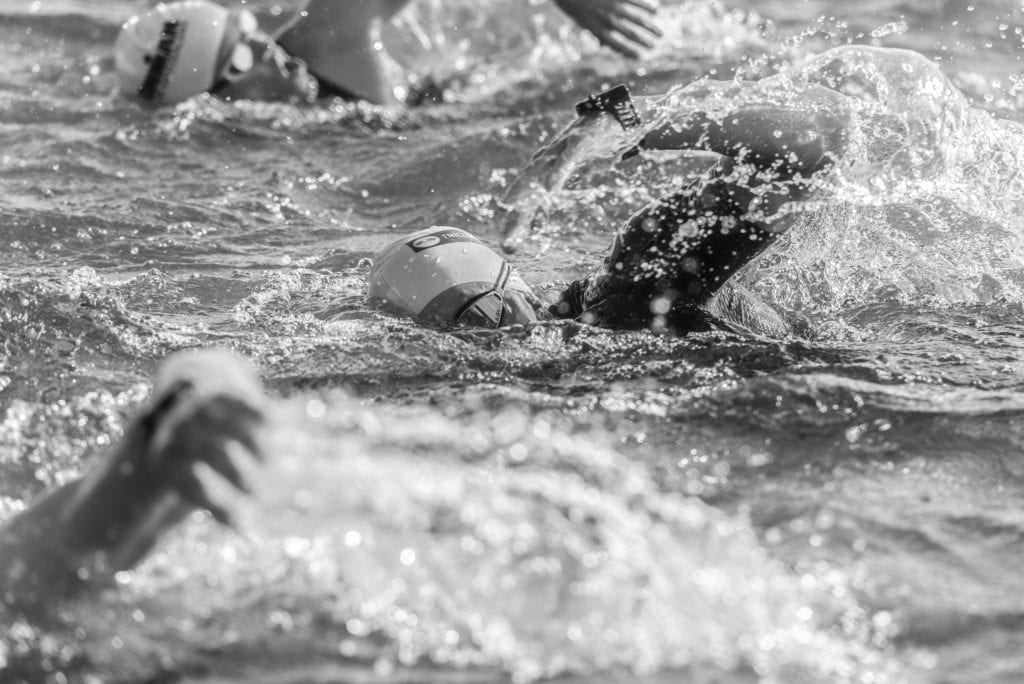
Swimming with a water shoe is usually harder than without. You may feel less capable of swimming than you normally would.
It may take time to get used to using water shoes while swimming and it may slow down your swimming progress, but it is possible.
If you are running a marathon decide if you want to get a pair of slip-on water shoes to use when running over rough terrain going into the ocean and coming back out.
You can store your water shoe in a pocket or belt while you swim and slips them on when you get to shore. It may also help you make a little better time while running over the sand to your next event.
Most people will find that swimming with water shoes can work, it may take some getting used to.
6. Boating, Canoeing, and kayaking with Water Shoes
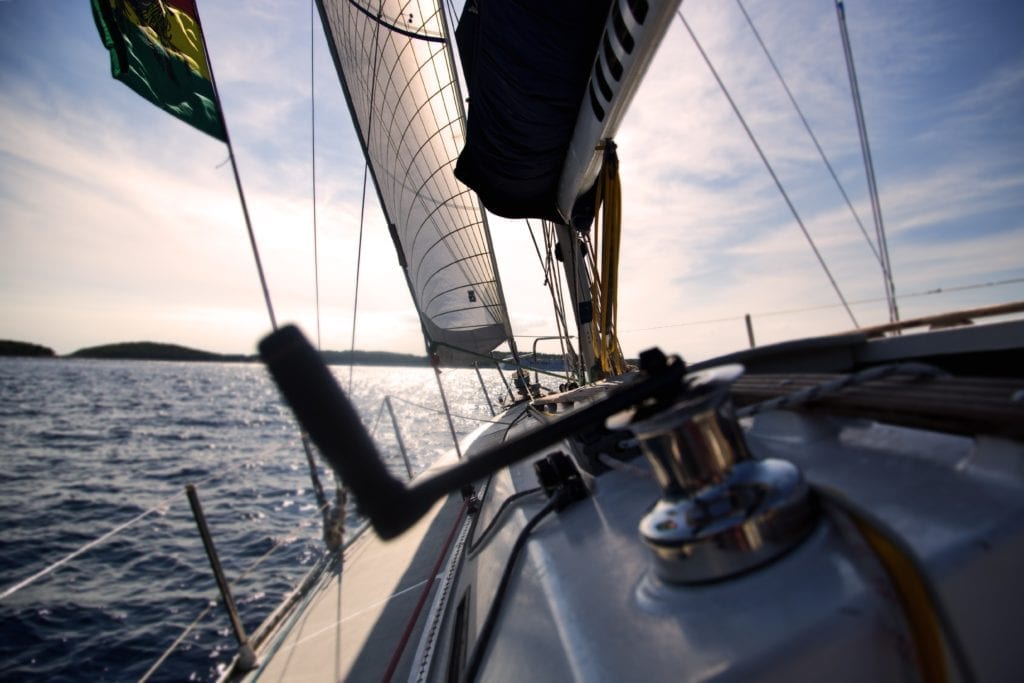
Using water shoes for boating is a great option to keep you from slipping in damp conditions while letting your shoes breathe.
You may want to shop around for a sturdy water shoe because you’ll want them to help protect your feet from anchor points, riggings, and other items on the boat.
A good pair of water shoes, sometimes called boat shoes, will feel comfortable, be durable, and will usually look similar to a regular shoe.
They can help protect your feet from getting sunburned and allow an easy transition from boat to dock.
Canoes and kayaks often have close contact with the water. If you like to have protection for your feet with these types of activities, they will aid you in getting a good grip for your feet and protecting getting out of your canoe or kayak.
Decide if your boating situation may call for these types of shoes. No shoes or regular shoes will work much of the time as well.
7. Fishing with Water Shoes

Having shoes is a good idea when fishing. There’s bound to be something irritating for your feet without some shoe protection.
Having the option to go in the water might be important while fishing, and having a nice pair of water shoes will come in handy.
While fishing from the beach, lake, or river’s edge, you’ll likely come in contact with the water. Even fishing from the dock, you might want to get your feet wet.
If you think water shoes will be helpful for you, decide which one will work for your situation and catch a big one.
8. Volleyball and Beach Sports with Water Shoes

Most people play sand volleyball without shoes. It might seem strange to use any kind of shoe when playing.
But if the sand is very hot or rocky, getting water shoes will protect your feet.
Playing volleyball with your water shoes can help you cover more distance more easily since your foot is not sinking in the sand as much. You’ll have protection against the sun and sand if needed.
When running around and doing different activities like playing frisbee, football, flying a kite, or other games, your water shoes can protect your feet and help you have more energy since your foot is not sinking in the sand.
9. Windsurfing with Water Shoes
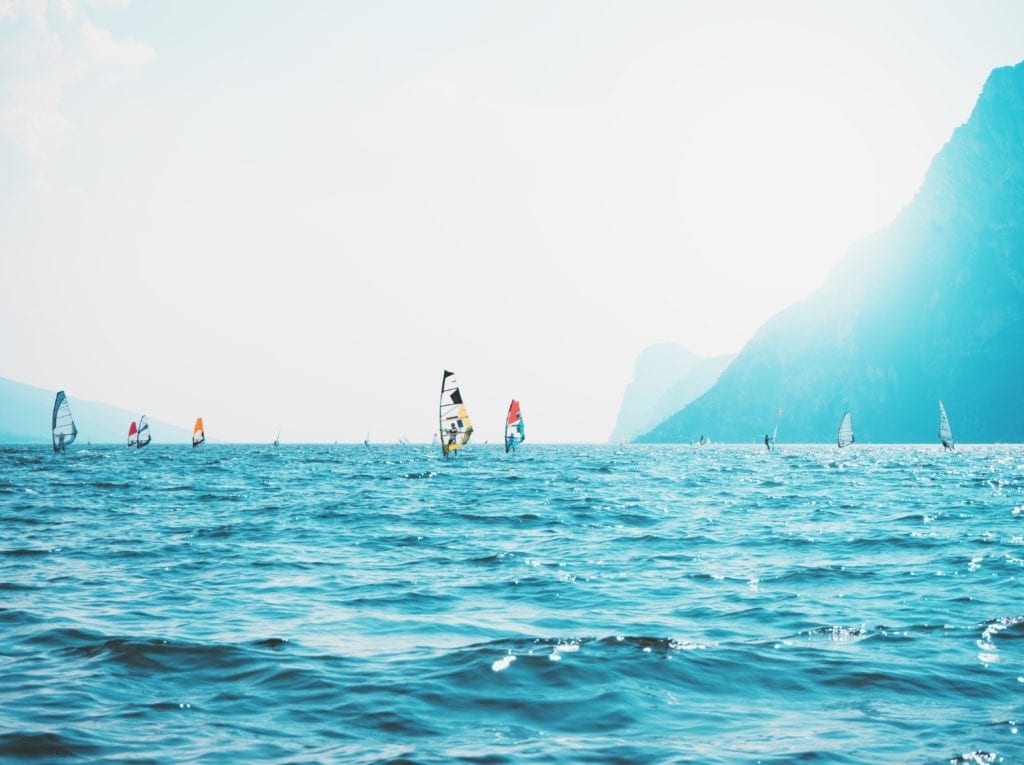
Your feet may likely be securely strapped down when using your windsurfing board, but if you need a little extra grip, water shoes may be your solution.
A windsurfing board may also have a gritty texture on some parts to help the surfer’s feet stay firmly in place. If this grip is too rough on your feet, you may decide that water shoes will help protect your feet from rubbing, cuts, and scratches.
10. Considering Going White Water Rafting?
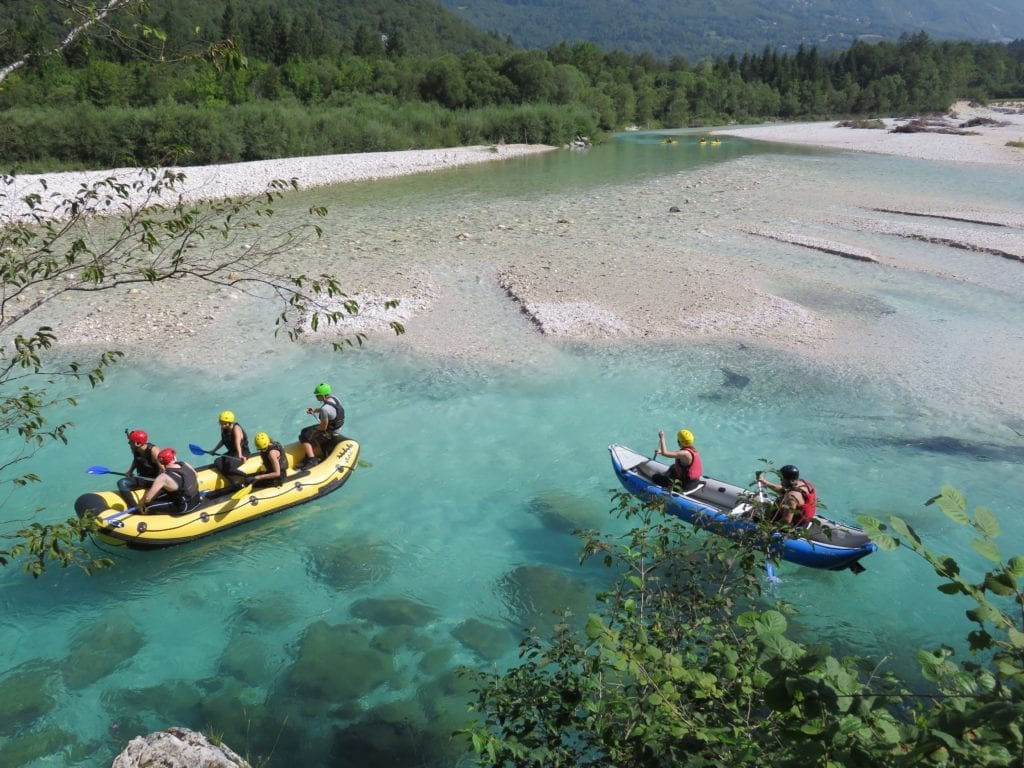
You’ll most likely want water shoes while white water rafting. The transition from a rocky river bank to your raft will necessitate some foot protection.
During rapids, you may fall out of the boat or the boat may capsize. You’ll need your shoe to help protect your feet and help with the slippery situation you may find yourself in.
11. Paddleboarding with Water Shoes
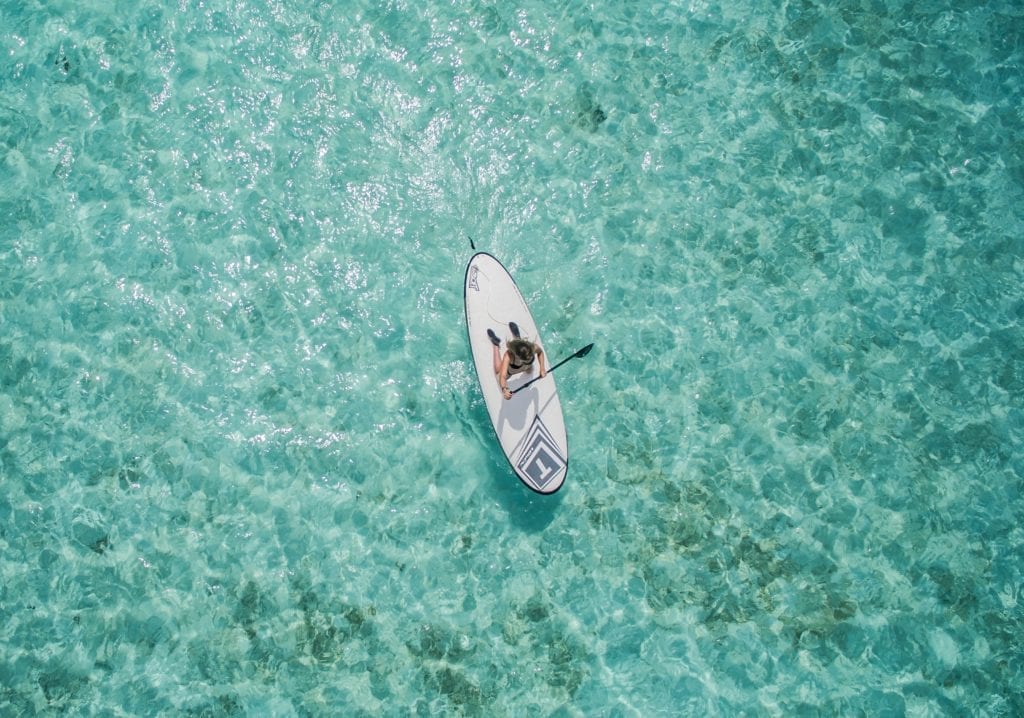
If you’re out in shallow water and are falling off your paddleboard, you might need water shoes to protect you from rocks and corrals.
Your shoes may help with some sun protection and give you some grip on the board if the wax has been stripped away.
Your shoes can help you transition to the beach and car without having any irritating problems from rocks and sand getting between your toes.
During heavy surf, you may need to wash out your water shoes to ensure they haven’t collected sand and rocks during your entry onto the shore.
You’ll likely be happy to have your shoes if the conditions call for them.
Buying Water Shoes
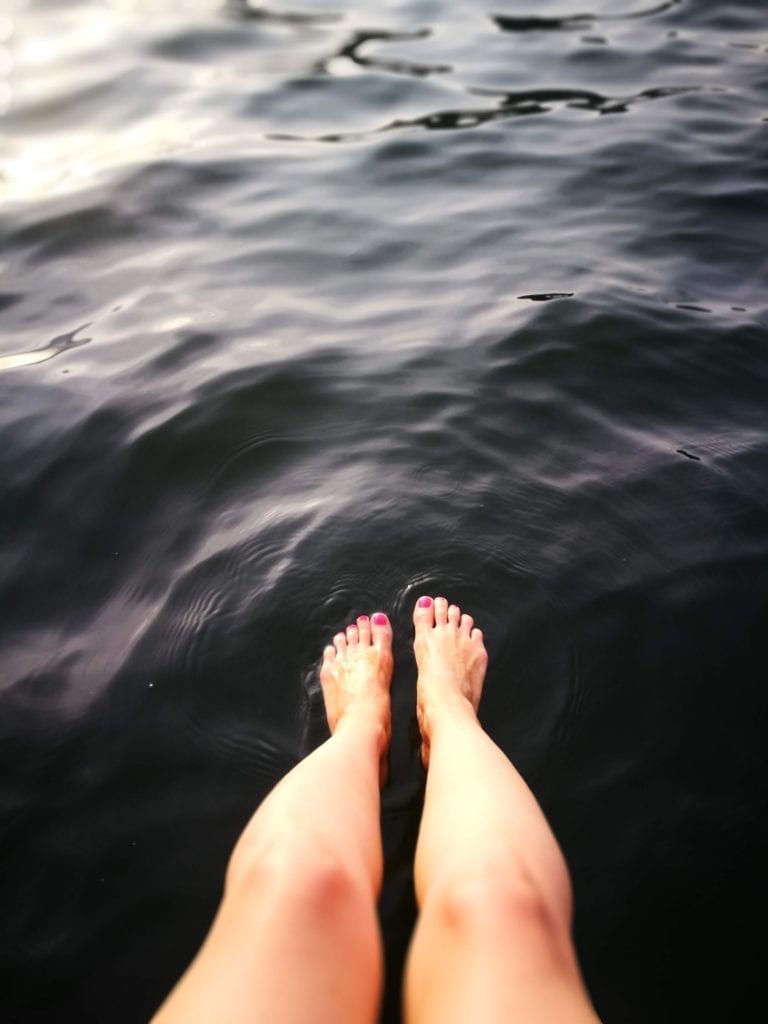
Decide which activities you will most likely use your water shoe for.
It might be nice to have thin-soled water shoes. They are lighter, less bulky, and provide adequate protection in many situations. You might opt for a thicker sole, for added protection and durability.
Let’s take a look at some of the benefits of each type of water shoe and then you might be better able to decide which is better (article) for you.
Which to Choose
Thin Sole
Here are some of the benefits of a thin-soled water shoe.
- You can use them to protect your feet from hot sand, hot pavement, and sidewalks.
- They protect your feet from rocks and other sharp objects under your feet.
- They give you a grip when you find yourself in areas that might be slippery.
- They may provide some protection from the sun.
- Water usually drains from them fairly well, although many thin-soled water shoes do not have holes in the sole.
- They dry quickly, but at times, you may need to drain excess water that may be trapped by the sole.
- They are multipurpose, so you can use them at the beach, for water sports, at home, or when doing yoga or exercises that involve having a firm grip on the floor.
- You might be able to jog in water shoes if you’ve run in minimalist shoes previously.
- (There is some risks of injury for some people when using this type of shoe for running, so consult your doctor first and take it slow. Your foot and muscles will need time to adjust to this type of shoe.)
Thick Sole
Here are some of the benefits of a thick-soled water shoe.
- You can use them to walk almost anywhere you would with a regular shoe, although maybe not as long.
- They can protect your feet from all sorts of sharp and semi-rough terrain.
- They usually have holes at the bottom of the soles and mesh on the sides, allowing water to escape easily.
- They dry quickly, so you can walk with less worry about wet feet rubbing against materials or themselves.
- They can be designed to act in almost the same manner as a regular shoe and have an insole for cushioning, laces for an increased snug fit, and a thicker fabric that protects better than a thin mesh.
- You might be able to jog in these shoes for a period of time, although that’s not what they are designed for. Be careful to take it easy while you’re getting to know the limits of your shoes.
- These can do almost everything a thin-soled water shoe can do. A thicker soles means you that you may be able to stay in them longer than a thinner-soled water shoe.
Thanks for visiting Helpshoe.com
Additional Questions
When should I use a wet suit sock?
Wear a wetsuit sock when the temperature is cold enough for you to need warmth while doing activities like surfing. They provide warmth, some foot protection, and a grip for your feet.
When should I buy a premium water shoe?
If you’ll be hiking for much of the day and going through streams, getting a quality water shoe will provide extra comfort and durability. For rougher situations, it’s best to spend more on a well-constructed water shoe.

